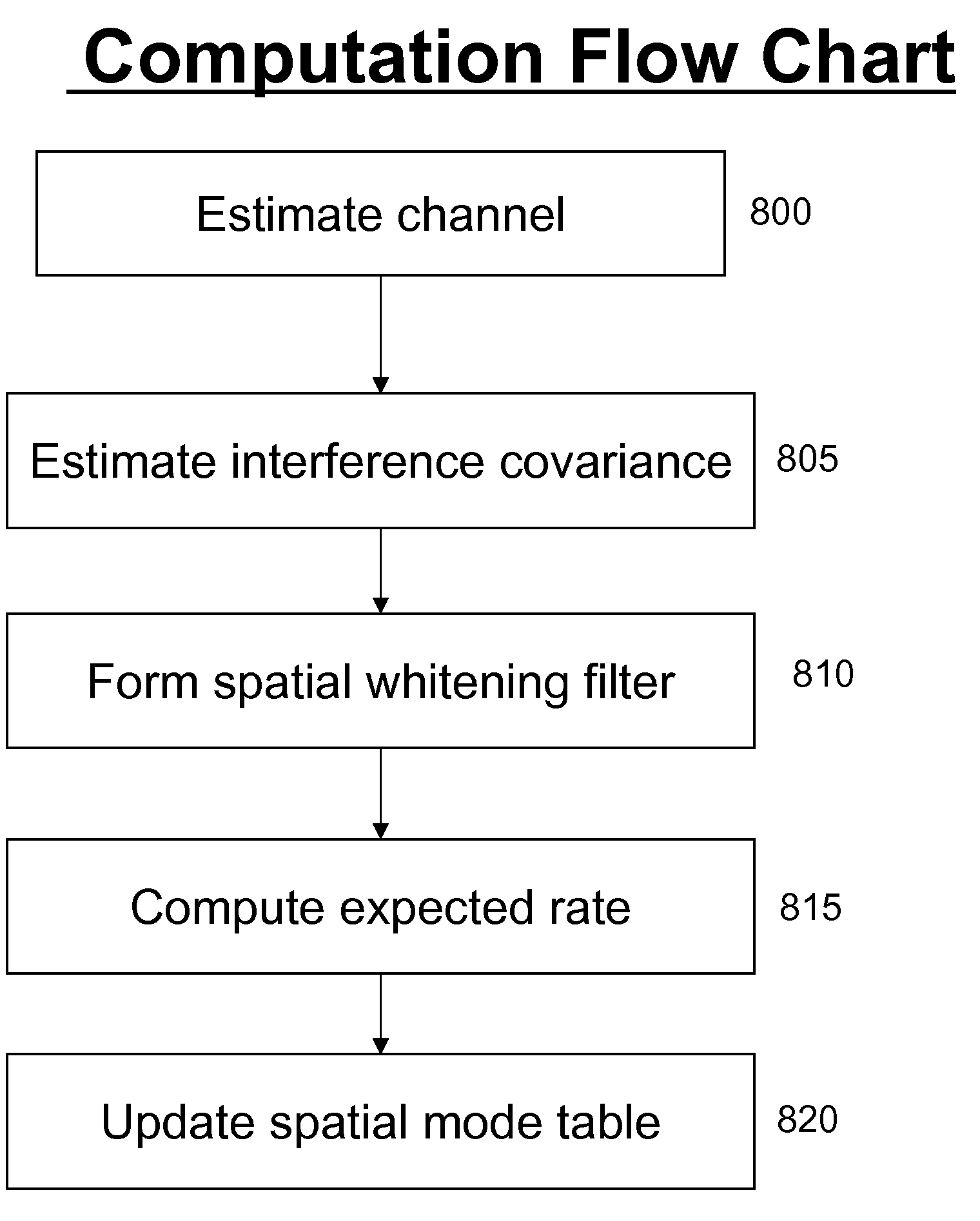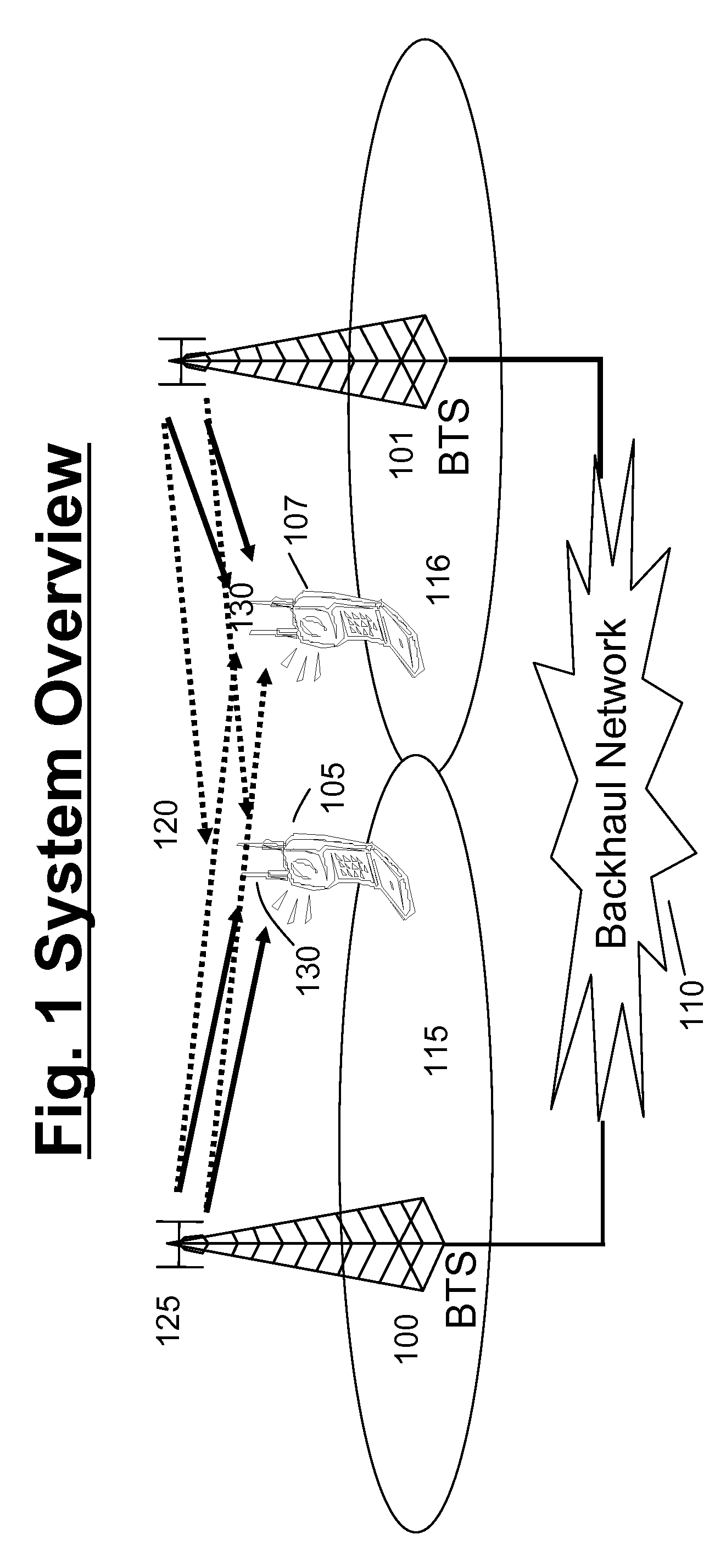Spatial mode adaptation at the cell edge using interferer spatial correlation
a technology of spatial correlation and spatial correlation, applied in the field of wireless communication systems, can solve the problems of limited communication link interference, increased bit error rate, reduced capacity, etc., and achieve the effect of more robust communication
- Summary
- Abstract
- Description
- Claims
- Application Information
AI Technical Summary
Benefits of technology
Problems solved by technology
Method used
Image
Examples
Embodiment Construction
[0029]The present invention will be described herein in the context of a MIMO wireless communication system. Those skilled in the art will recognize that the inventive concepts described with reference to the preferred embodiments are limited to those described embodiments and can be extended to other embodiments, uses, and applications. Well known elements are presented without detailed description in order not to obscure the present invention in unnecessary detail. For the most part, details unnecessary to obtain a complete understanding of the present invention have been omitted inasmuch as such details are within the skills of persons of ordinary skill in the relevant art. Details regarding control circuitry described herein are omitted, as such control circuits are within the skills of persons of ordinary skill in the relevant art.
[0030]FIG. 1 is a block diagram illustrating an idealized cellular communication system. Base transceiver station (BTS) 100 (sometimes also referred ...
PUM
 Login to View More
Login to View More Abstract
Description
Claims
Application Information
 Login to View More
Login to View More - R&D
- Intellectual Property
- Life Sciences
- Materials
- Tech Scout
- Unparalleled Data Quality
- Higher Quality Content
- 60% Fewer Hallucinations
Browse by: Latest US Patents, China's latest patents, Technical Efficacy Thesaurus, Application Domain, Technology Topic, Popular Technical Reports.
© 2025 PatSnap. All rights reserved.Legal|Privacy policy|Modern Slavery Act Transparency Statement|Sitemap|About US| Contact US: help@patsnap.com



